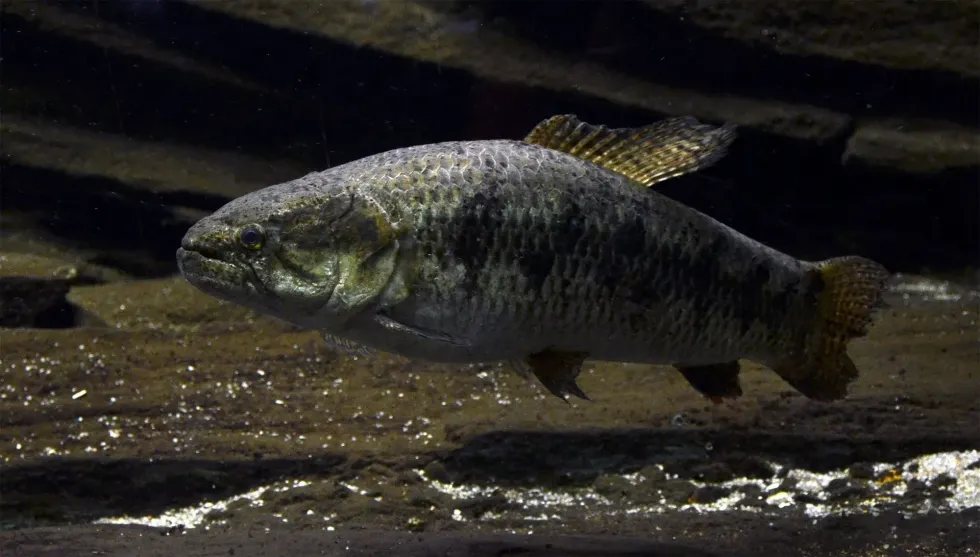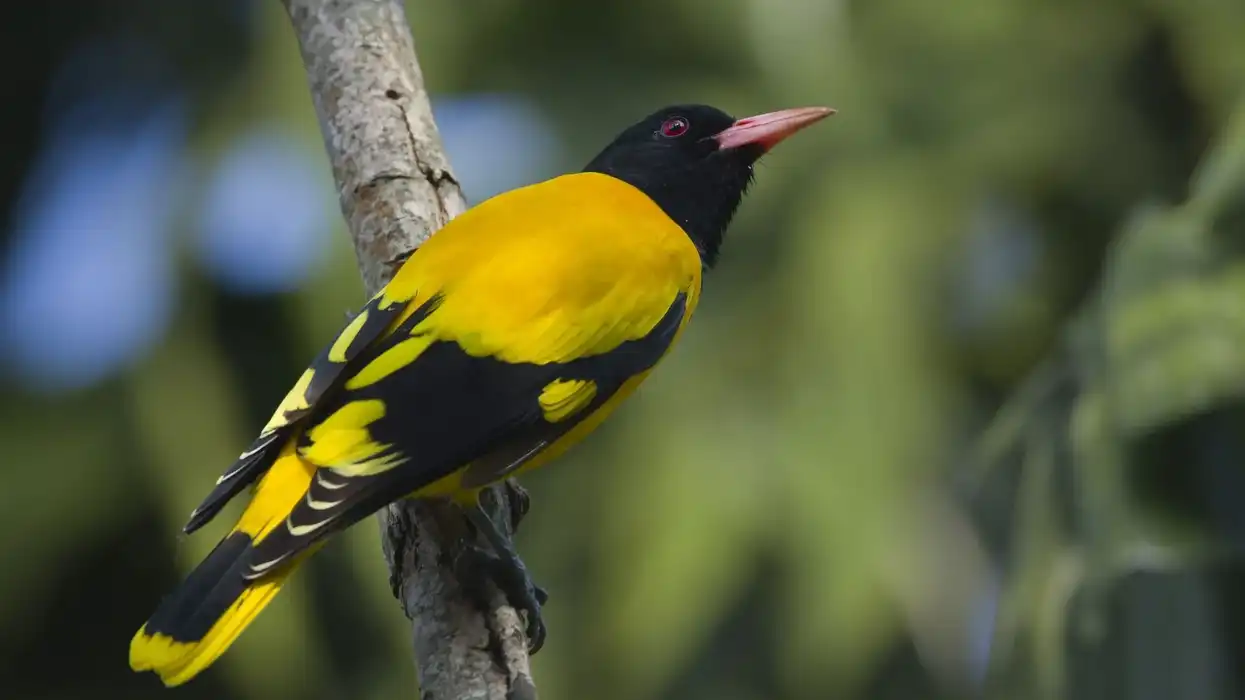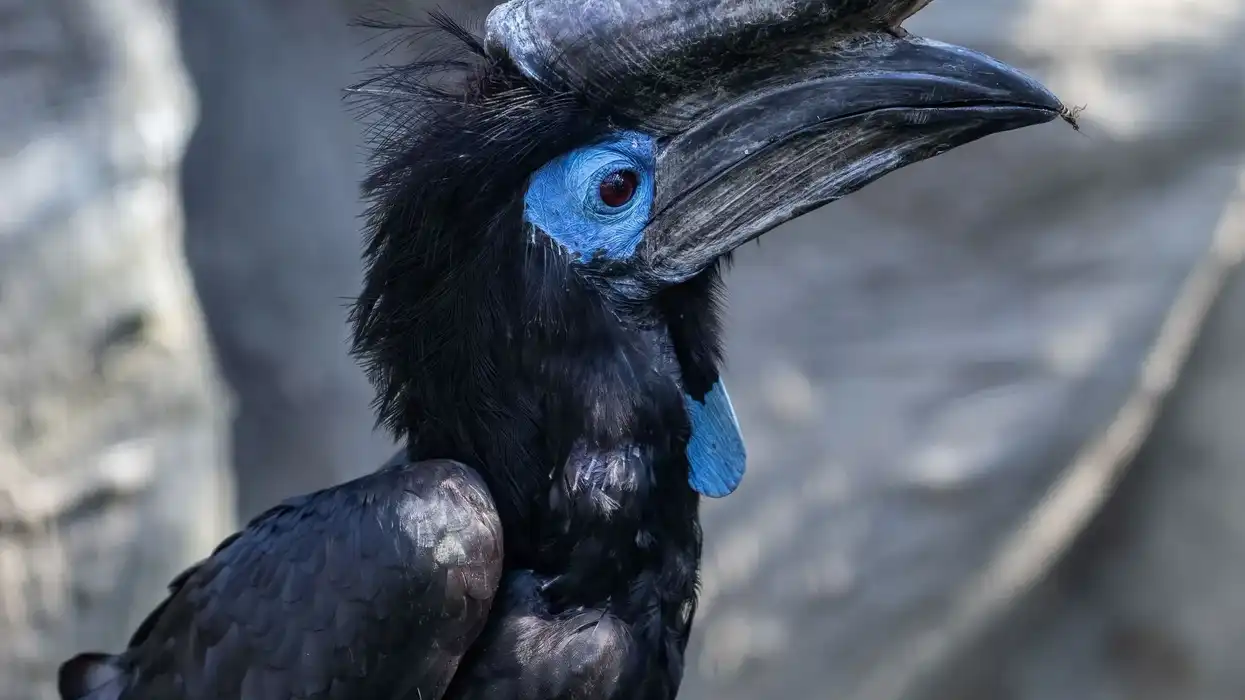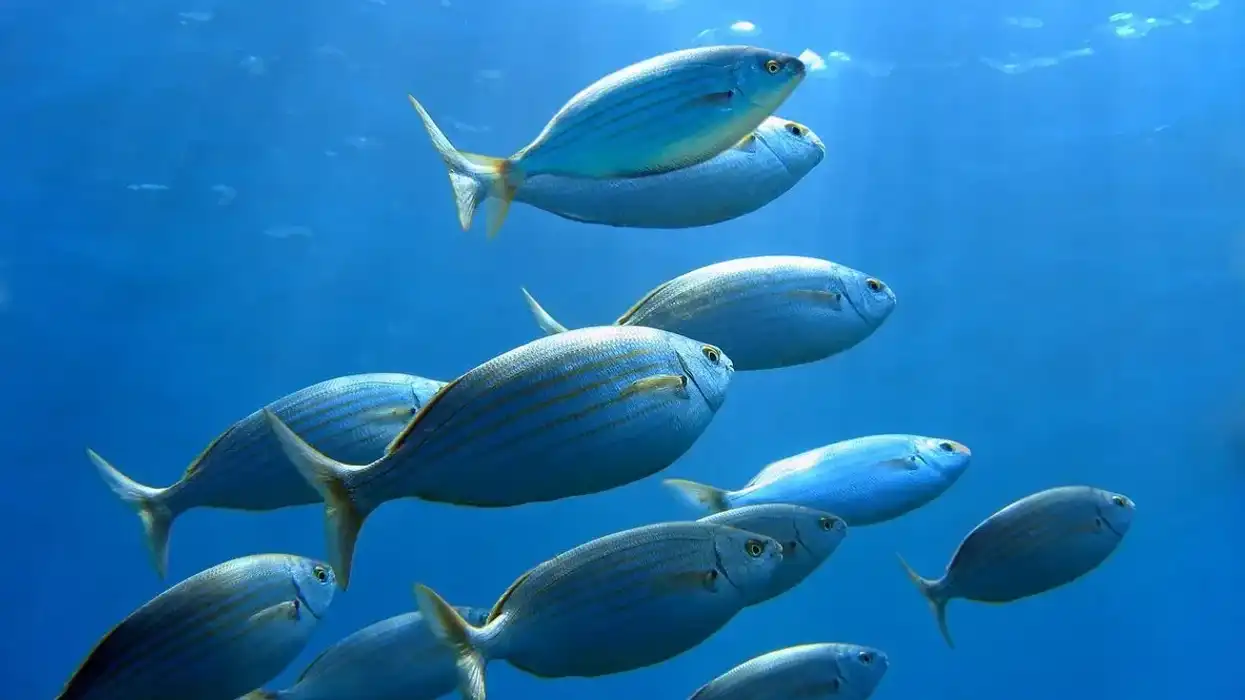The black wolf fish (Hoplias curupira) is a predatory fish of the Erythrinidae family. It is a broadly built fish with black and brown body colorations and is known to possess canine teeth.
These teeth are quite comparable to that of the wild piranhas. The Hoplias species are 8-51 in (20-130 cm) in length and are widely distributed in South America; through the Orinoco River basin and Amazon River basin. These are freshwater fish and are also kept in an aquarium and a fish tank.
These large Curupira species prey on crustaceans, small fishes, sea urchins, and insects. Their diet also involves seeds and fruits, and the fish is known to have an insatiable appetite and are able to bite humans.
They have the capability to inhale oxygen and balance the oxygen deficiency in the water. This particular adaptation helps them to thrive in swampy areas and drainage water. Keep on reading to know more about this menacing fish.
If you liked reading this article, then do check out witch flounder facts and grunter fish facts.
Black Wolf Fish Interesting Facts
What type of animal is a black wolf fish?
A black wolf fish is a predatory fish of the Erythrinidae family.
What class of animal does a black wolf fish belong to?
The black wolf fish belongs to the class Actinopterygii and the genus Hoplias. All species of this genus are thought to be aggressive, and it can be really difficult to pinpoint which wolfish is the most aggressive.
How many black wolf fish are there in the world?
Although the exact number of black wolf fish is unknown, there are a total of 16 subspecies of Hoplias in the world.
Where does a black wolf fish live?
The black wolf fish (Hoplias curupira) inhabits South America and are spotted in large numbers throughout Brazil, the Amazon River basin, and the Orinoco River.
What is a black wolf fish's habitat?
These wild wolf fish (Hoplias curupira) are freshwater animals and are known to reside in a variety of freshwater habitats, including rivers and aquariums. They are also capable of thriving in swampy regions and dirty drainage water.
Who do black wolf fish live with?
Black wolf fish are colonial and are mostly seen in pairs, like guppies.
How long does a black wolf fish live?
The exact length of their lifespan is not known yet. However, other fishes that belong to the same Actinopterygii class are known to possess a maximum lifespan of 20 years. The Atlantic wolffish is known to have a lifespan of 12 years.
How do they reproduce?
The female wolf fish reproduces by laying about 2,000-10,000 eggs that are yellowish in color. The males are responsible for digging up pits wherein the females lay clusters of eggs.
The male Hoplias species are responsible for protecting the eggs as well as the larvae. The females are generally larger in length than the males and bear rounded stomachs.
These Hoplias fish species are known to reside in pairs and start breeding once the water temperature level drops. The diet of the young ones includes small shrimps, for example, Artemia nauplii, just like the rainbow shiner's diet.
What is their conservation status?
The black wolf fish (Hoplias curupira) is not listed in the Internation Union for Conservation of Nature or the IUCN Red List. However, their population is slowly declining due to habitat loss, water pollution, and commercial fishing.
Black Wolf Fish Fun Facts
What do black wolf fish look like?

This wolf fish (Hoplias curupira) are easily recognizable due to their distinctive features like the continuous dorsal fin. They do not bear any pelvic fins and have a broadly built body with a large head.
Their body colors are black and brown. They possess 34-39 scales along their lateral body line. These tropical Hoplias species possess small black pores along each side of their jaw.
The black piranha vs. wolf fish has quite an interesting similarity, as these species are known to be aggressive like the piranhas. The Hoplias species have sharp, canine-like teeth with which they are able to tear the flesh of their prey into pieces.
How cute are they?
The Hoplias species are not at all cute looking because of their menacing set of teeth and large bulky body.
How do they communicate?
Although the exact mode of communication of wolffish is not known, they are capable of changing their body color depending on their mood. These colors can range from light yellow, orange, brown to dark black shades. They are excellent predators and waits to capture their prey in dense vegetation.
How big is a black wolf fish?
The Hoplias species are 8-51 in (20-130 cm) in length and are way bigger than the candiru catfish, which are about 2-7 in (5-17 cm) large.
How fast can a black wolf fish swim?
Although the exact speed of the black wolf fish (Hoplias curupira) is not recorded, they are not very fast swimmers and are known to wait patiently in order to capture their prey.
How much does a black wolf fish weigh?
The tropical wolf fish weighs about 66 lb (30 kg).
What are the male and female names of the species?
There are no sex-specific names given to the male and female fish of this species.
What would you call a baby black wolf fish?
A baby wolf fish is called a fry.
What do they eat?
Black wolf fish eat crustaceans, small fishes, insects, insect larvae, and worms. They also feed on seeds and fruits.
Are they dangerous?
This species is known to be very aggressive and possess sharp, deadly teeth along with a powerful jaw. They prey on other small fishes and can even bite humans. They are often considered to be deadlier than piranhas.
Would they make a good pet?
Despite their intimidatingly sharp teeth and black body, these fish species make it to the aquarium and can be kept as pets. In fact, they showcase an interesting behavior with other fish species and are quite easy to maintain.
Did you know...
Despite their unpleasant appearance, these species of fish are eaten by humans and are sold extensively in Central and South American fish markets. They are known to be highly fleshy and possess a large number of bones.
Their favorite food is sea urchins, and thus, the wolffish species are considered great contributors to the ecosystem as they prey on large numbers of sea urchins. Sea urchins are capable of destroying kelp beds and therefore deprive a large number of aquatic organisms that depend on the kelp for their diet and for shelter.
They are also known to be extremely loyal partners and do not fertilize the eggs of other females. The males stick to their female partners throughout their life.
Why is it called a wolf fish?
They are called so because of their canine-like teeth and powerful jaw, just like wolves.
What size tank do wolf fish need?
Due to their large size, these fish are kept in large tanks with dimensions 60 x 24 x 24 in (150 x 60 x 60 cm) or even bigger.
Here at Kidadl, we have carefully created lots of interesting family-friendly animal facts for everyone to discover! Learn more about some other fishes from our guineafowl puffer facts and honeycomb stingray facts pages.
You can even occupy yourself at home by coloring in one of our free printable fish coloring pages.









